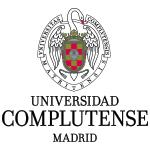Genomic Plasticity of Vibrio cholerae
Investigation published in International Microbiology
September 1st, 2017
Vibrio cholerae is one of the deadliest pathogens in the history of humankind. It is the causative agent of cholera, a disease characterized by a profuse and watery diarrhoea that still today causes 95.000 deaths worldwide every year. V. cholerae is a free living marine organism that interacts with and infects a variety of organisms, from amoeba to humans, including insects and crustaceans. The complexity of the lifestyle and ecology of V. cholerae suggests a high genetic and phenotypic plasticity. In this review, we will focus on two peculiar genomic features that enhance genetic plasticity in this bacterium: the division of its genome in two different chromosomes and the presence of the superintegron, a gene capture device that acts as a large, low-cost memory of adaptive functions, allowing V. cholerae to adapt rapidly
Escudero JA. and Mazel D.
| Bacterial Genome Plasticity (BGP). Department of Genomes and Genetics. Institut Pasteur. | |
| Centre National de la Recherche Scientifique (CNRS). | |
 | Bases Moleculares de Adaptación. Facultad de Veterinaria. Universidad Complutense (UCM). |
 | Servicio de Zoonosis de Transmisión Alimentaria y Resistencia a Antimicrobianos (ZTA). Centro de Vigilancia Sanitaria Veterinaria (VISAVET). Universidad Complutense (UCM). |

